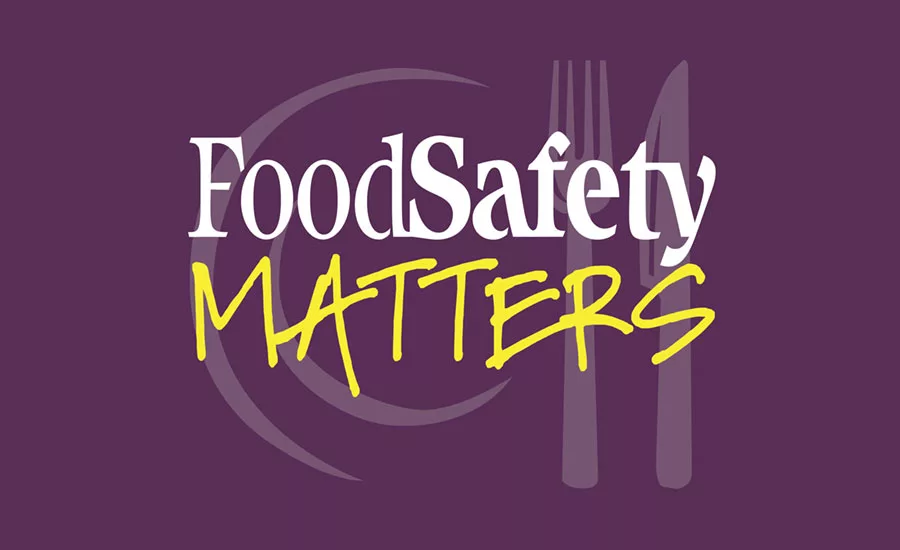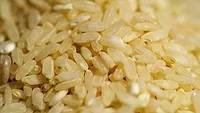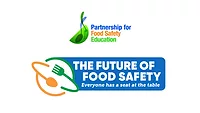Ep. 125. Dr. Conrad Choiniere: Moving 'Closer to Zero' Through Collaboration

Conrad Choiniere, Ph.D., is the Director of the Office of Analytics and Outreach at the U.S. Food and Drug Administration's (FDA's) Center for Food Safety and Applied Nutrition (CFSAN). Dr. Choiniere provides executive leadership for a broad portfolio of scientific and regulatory functions including risk and decision analysis, social and behavioral sciences, epidemiology, biostatistics and informatics, education and outreach, and food defense. Dr. Choiniere currently co-leads a core element of FDA's New Era of Smarter Food Safety focused on fostering and supporting food safety culture across the food system. He also chairs FDA's Toxic Elements Working Group, which prioritizes the Administration's efforts to reduce exposures to lead, arsenic, and other heavy metals from foods to the greatest extent feasible. Dr. Choiniere holds a Ph.D. in Agricultural and Resource Economics from the University of Maryland and a B.S. degree in Chemical Engineering from Johns Hopkins University.
Kruti Ravaliya, M.S., Consumer Safety Officer in the Division of Produce Safety at FDA's Center for Food Safety and Applied Nutrition, joined the Division of Produce Safety as an Oak Ridge Institute for Science and Education (ORISE) Fellow in July 2013, and transitioned to be a Consumer Safety Officer in April 2015. She has been involved with the Division of Produce Safety in a variety of ways, most significantly in developing the Supplemental and Final Agricultural Water Quality provision in the Produce Safety Rule. She earned her M.S. degree in Food Science, with minors in Biotechnology and Food Safety, at North Carolina State University in 2013, and a B.S. degree in Food Science and Spanish from the University of Massachusetts, Amherst, in 2007. Previously, Ms. Ravaliya worked in food product development with the International Food Network.
Subscribe on Apple Podcasts | Stitcher | Google Play | Android
In this episode of Food Safety Matters, we speak with Kruti [22:16] about:
- FDA’s recent updates to Subpart E of the Produce Safety Rule, including the recently extended compliance dates for pre-harvest agricultural water requirements
- The nuances of microbial quality testing for water, and why it is a “tool within the grower’s toolbox,” rather than a requirement for growers
- How stakeholder feedback has informed FDA’s updates to its regulation of pre- and post-harvest agricultural water
- Ways in which FDA intends to partner with state and local officials to educate and train growers on compliance with the Proposed Agricultural Water Rule
We also speak with Conrad [33:47] about:
- His work within FDA's Toxic Elements Working Group and its considerations when assessing the risk to public health from toxic elements in certain foods
- How scientific advancements and regulatory changes over time have affected actual and detected levels of toxic elements in the U.S. food supply
- Actions that growers and manufacturers can take to reduce the uptake of toxic elements into foods, and to ensure that toxic elements are not introduced at the production level
- FDA’s intent to collaborate with the U.S. Department of Agriculture (USDA) and industry to develop and disseminate guidance regarding preventive controls for toxic elements in food production
- The purpose of action levels in signaling to industry the importance of monitoring and finding solutions for reducing certain contaminants
- FDA’s “cycle of continual improvement” approach in its Closer to Zero initiative, including four key steps to understanding and mitigating the health risk of toxic elements in baby foods
- Why it is crucial to consider nutrition when setting action levels
- The importance of FDA’s collaboration with USDA in expanding upon and executing the goals of its Closer to Zero initiative
- FDA’s current and future work to understand and reduce the presence of toxic elements in food, including the agency’s sampling activities, its intent to target cadmium and arsenic, and other initiatives
- Key achievements of FDA's Toxic Elements Working Group since its inception in 2017
- The importance of collaborating with relevant agencies and industry stakeholders to find appropriate solutions for the not-so-simple task of reducing toxic elements in the U.S. food supply.
News and Resources:
USDA FSIS Declares Salmonella an Adulterant in Breaded, Stuffed Raw Chicken Products [5:14]
FDA Shares Updates on Cyclospora Action Plan [8:20]
FDA Plans to Continue Remote Regulatory Assessments [10:52]
FDA Releases New Dashboard for Laboratory Accreditation for Analyses of Foods Program
Looking for quick answers on food safety topics?
Try Ask FSM, our new smart AI search tool.
Ask FSM →
[WEBINAR] FDA's Smarter Tools—How Remote Regulatory Assessments Help Ensure Food Safety
FDA has more information on its website about the agency’s continued work to address toxic elements in the food supply. Learn more about FDA’s programs referenced in the podcast:
Closer to Zero Action Plan for Baby Foods
Ongoing Total Diet Study Monitoring Nutrients and Contaminants in Foods Eaten by People in the U.S.
Toxic Elements in Food and Foodware, and Radionuclides in Food Compliance Program
Food Safety Insights Column, Bob Ferguson
We Want to Hear from You!
Please send us your questions and suggestions to podcast@food-safety.com








